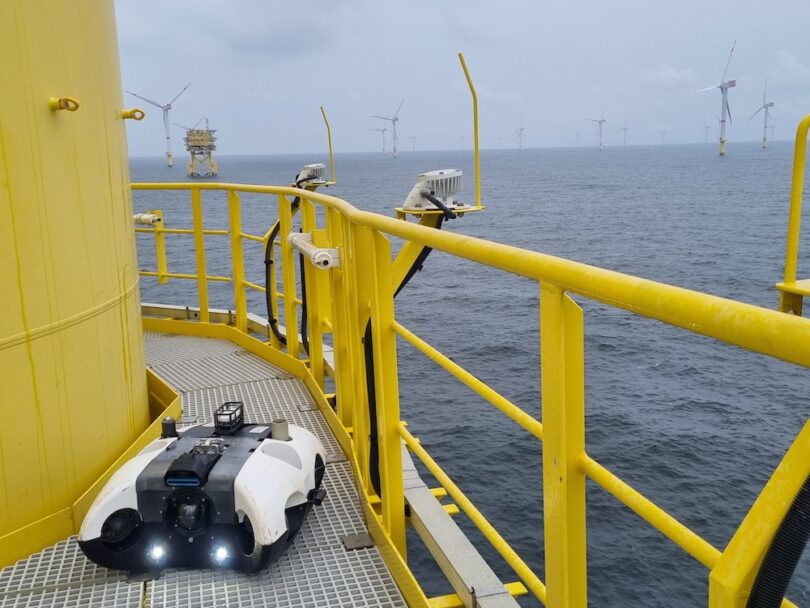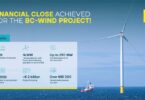BeeX is a tech start-up that designed and manufactured the A.IKANBILIS, a hovering autonomous underwater vehicle (HAUV) that operates underwater, kind of like a self-driving car but in the ocean. The HAUV is designed to capture important information about underwater and marine infrastructure. Their goal is to provide cost-efficient analysis of underwater structures to asset owners, using A.IKANBILIS’s learning brain allows it to adapt and create valuable datasets. They are focused on the renewable sector right now, especially offshore wind and floating solar farms.
In Singapore, water analysis typically involves a combination of methods. Divers collect water samples, and these samples are sent to labs for analysis. While these approaches have been effective enough in the past, they can be very time-consuming, expensive, and risky for divers. Moreover, waiting for lab results can cause delays in obtaining crucial water quality information. Therefore there is a demand for more efficient and real-time monitoring solutions to overcome these limitations and ensure prompt and accurate analysis.
A.IKANBILIS
The A.IKANBILIS is a hovering autonomous underwater vehicle (HAUV) developed by BeeX, which can be compared to a self-driving car for underwater use. Its purpose is to capture important information about underwater and marine infrastructure. The vehicle is smart and learns about its environment and captures data that can provide cost-efficient analysis of underwater structures to asset owners. This method is more cost-effective and less operationally complex than traditional approaches such as using divers or remotely operated vehicles (ROV).
The A.IKANBILIS can be used in various industries that involve underwater assets, such as marine vessels that transport goods, coastal protection, aquaculture, internet cables, and energy sources. However, BeeX is currently most focused on the renewable sector, where there is a dense infrastructure of offshore wind and floating solar farms.
With A.IKANBILIS, BeeX can gather precise and comprehensive information about underwater structures and marine environments, enabling more accurate analysis and decision-making. But that’s not all! A.IKANBILIS also helps in reducing our carbon footprint. Since it operates underwater autonomously, there’s no need for large surface vessels or extensive equipment, which means less fuel consumption and environmental impact. And let’s not forget about safety. By utilizing A.IKANBILIS, BeeX can minimise the number of on-site personnel in risky places; Instead of sending divers into potentially dangerous underwater situations, people can rely on the technology to perform the necessary inspections and data collection.
So, in a nutshell, A.IKANBILIS addresses the need for better data, promotes environmental responsibility, and enhances safety by reducing human exposure to risks. It’s a smart solution that brings efficiency and innovation to underwater operations.
What makes A.IKANBILIS better than remotely operated vehicle (ROV) systems?
ROVs rely on a tether, which can be a real hazard, risking entanglement or even losing the ROV altogether. Plus, you typically need a manned vessel due to the tether, which adds to the complexity of deployment and increases the carbon footprint. A skilled pilot required to operate an ROV takes years of training before they have the experience to collect high-quality data. At this junction when ocean data is so important, how do we overcome this gap?
Data quality of data collected with an ROV is heavily reliant on the skill of the pilot, introducing another variable. The thing about ROVs is that precise positioning data are not usually included (since it was pilot-flown), making it challenging to identify exact locations for follow-up work. On the other hand, A.IKANBILIS is a breeze to operate. It tracks the exact positioning of the vehicle during missions, which allows asset owners to pinpoint the site of an anomaly for follow-up work like repair work. The A.IKANBILIS can fly autonomously, intelligently finding the best path, excels at station-keeping, and battle currents with finesse to perform admirably in real-life situations. It’s like having a skilled pilot and advanced technology wrapped up in one impressive package.
One of the key areas where BeeX improves safety in our oceans is to eliminate the need for humans on vessels altogether. Unlike traditional ROVs, which require support vessels with up to 60 people for power supply and real-time communication, A.IKANBILIS operates autonomously. This means we can conduct underwater operations without putting human lives at risk in potentially hazardous environments. By removing the necessity for human presence on vessels, we take a big step forward in enhancing safety and minimizing potential accidents or injuries.
For example, BeeX has a partnership with ST Engineering who can provide an unmanned surface vehicle (USV) to launch the A.IKANBILIS. This partnership between BeeX and ST Engineering forms the world’s first fully integrated autonomous surface-to-underwater inspection system. It’s a smart and innovative solution that prioritises the well-being of both the environment and the people involved.
BeeX and A.IKANBILIS are making remarkable strides in reducing environmental footprints. Traditional vessels used for underwater operations can generate around 7000 tons of carbon dioxide emissions per year per vessel. However, BeeX tackles this issue head-on by eliminating the need for such vessels altogether. With A.IKANBILIS, our hovering autonomous underwater vehicle, we remove the CO2 emissions associated with vessel operations. Additionally, A.IKANBILIS is exclusively powered by rechargeable electrical batteries, which are produced in-house. This means we can operate in an environmentally friendly manner, without relying on fossil fuels. It’s a smart and sustainable approach that contributes to reducing our impact on the environment.
Learn more: https://beex.sg/







